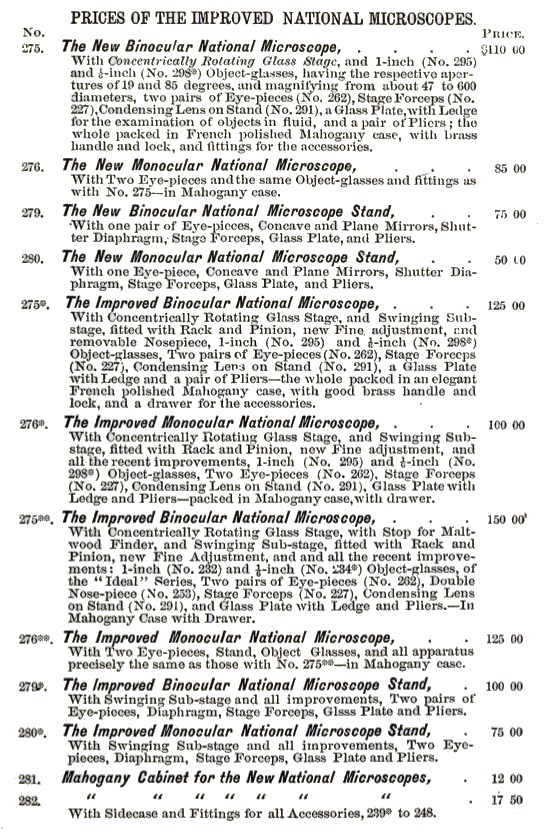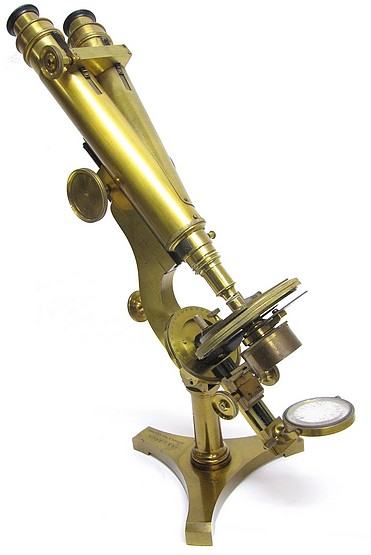
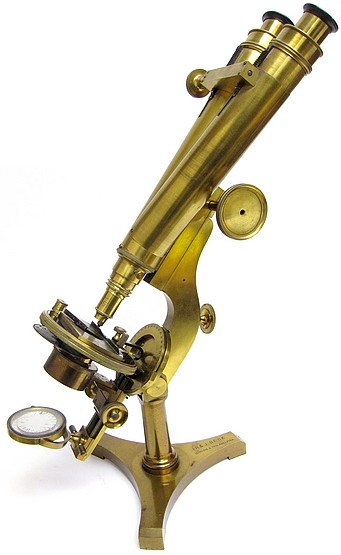
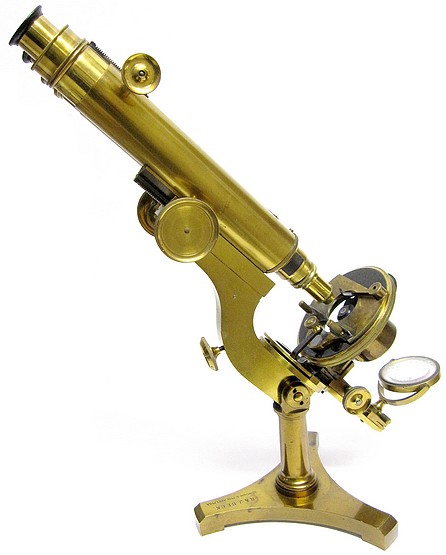
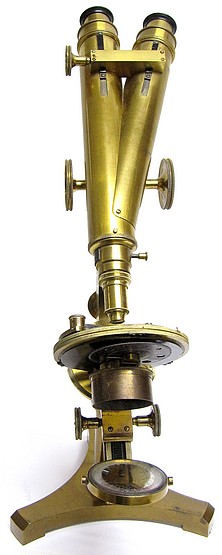
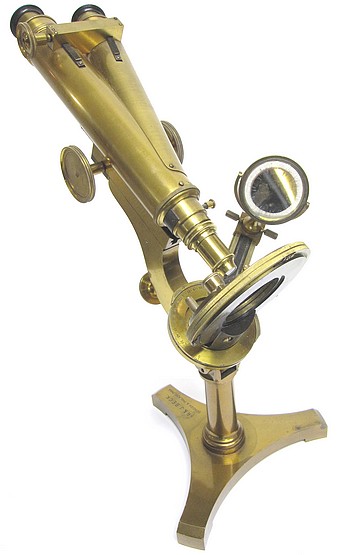

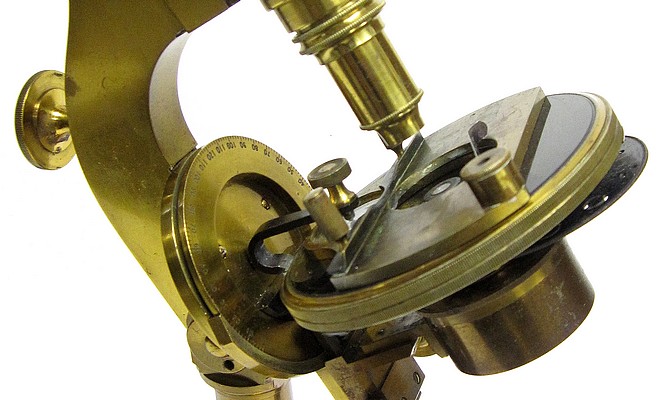
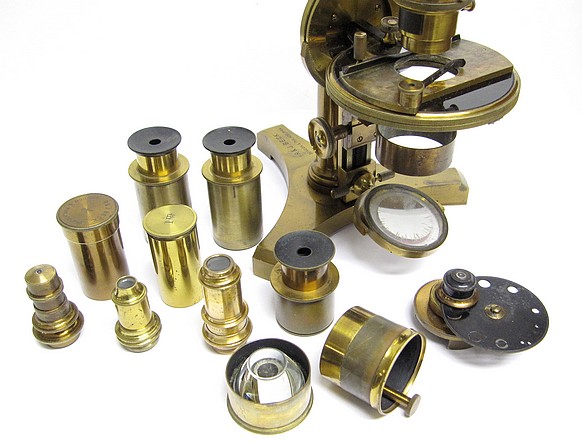
The accessories include two Beck objectives with canisters marked 1-inch and 1/6-inch, a B&L 3-inch objective, a matched pair of eyepieces and a single higher power eyepiece, an achromatic condenser with aperture wheel, a paraboloid condenser for dark field work, a fitting with an aperture stop, and a slide carrier that can be pushed along the surface of the glass stage.
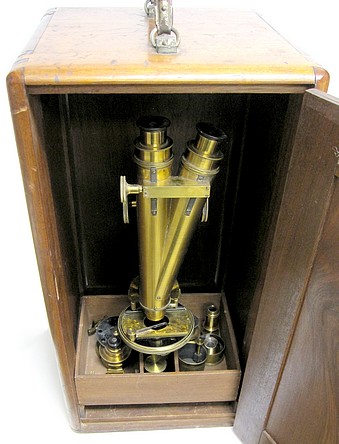
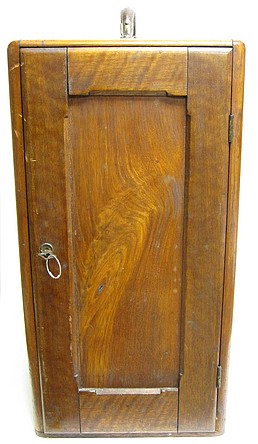
The R. & J. Beck "National" model microscope, which was sold by several US retailers is similar to Zentmayer's "United States Army Hospital" model and to Queen's "Students" model. The original "National" model was soon replaced with the "New National" model, which, in turn, was modified to give the "Improved National" model, a binocular example of which is shown on this page. The "Improved National" version differs from the "New National" in three ways. The sub-stage now focuses by rack and pinion, a long lever mechanism fine adjustment replaces the nosepiece fine adjustment used previously, and the improved model now incorporated a calibrated swinging sub-stage, a feature that became very popular with various manufacturers during the last quarter of the 19th century as a means to achieve oblique illumination.
The following has been extracted from the 1882 R. & J. Beck catalog:
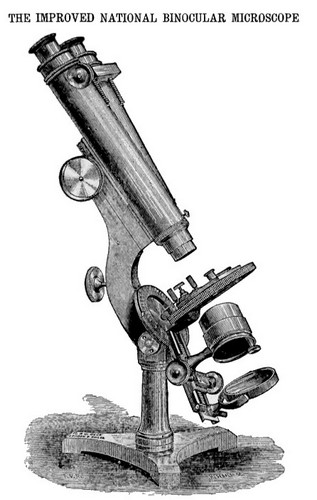
DESCRIPTION OF THE IMPROVED NATIONAL MICROSCOPE.
Although the popularity of the New National Microscope continues to grow steadily, there has arisen a demand among certain Microscopists for additions to that instrument which we can no longer resist, and following the initiative taken in the production of our "Ideal" Stand, have now introduced the same general features, with others peculiarly its own, into the Improved National Microscope, which we present and recommend as being far superior to any of its class and cost heretofore produced.
The general form and design of the Improved instrument are the same as those of the old one, and with the alterations and additions can be readily comprehended by a glance at the accompanying illustrations. The admirable rotating glass stage, with its movable slide holder, have been retained without alterations, excepting the addition of a stop for Maltwood's Finder, and a considerable reduction in thickness. The triangular bar carrying the Mirror and Sub-stage revolves around the Main Stage, as in the "Ideal" Microscope, upon a graduated circle, by which the degree of obliquity of illumination can be accurately read. There is a Centering Stop to this swinging bar in the Optic Axis, and as it is arranged to swing above the stage, the Mirror can be used for Opaque illumination, although a Condensing Lens on Stand is also provided for this purpose. The Mirror, which is double (concave and plane), slides up and down upon this bar, and is provided with every needful adjustment. The Sub-stage carrying all forms of illuminating apparatus is adjusted by Rack and Pinion.
The Wenham prism in the Binocular Stand is mounted in a nosepiece which can be entirely removed from the Compound body, leaving the full-sized tube, without diaphragm, to receive an objective bearing the Broad-gauge or Butter field Screw, or an adapter with Society Screw (which is provided with each stand), whereby objectives of the widest angles may be employed as with an ordinary Monocular tube. The Monocular Stand is likewise provided with the same adapter to permit the use of the Broad-gauge Screw. This necessitates the removal of the fine adjustment from the nosepiece as in the old form of Nationals, and in the Improved form it will be found placed conveniently at the rear of the limb bearing the Compound body; a large milled head moving the latter with the greatest smoothness and delicacy. The workmanship and finish throughout are of the best, and the Stand may be fairly called First-class. The construction of the Sub-stage is such that nearly all the apparatus from No. C5 to 183 of this Catalogue may be used upon it, in addition to that which is especially designed for it.
As will be seen from the accompanying Price List, we have fitted the Improved Nationals with two Series of Objectives, the first and cheaper being those of our old and well known National grade, the others the " Ideal" class, which are of a still higher quality with cover correction for the 1/6-inch. At their respective costs either of these series of objectives are superior to all others now made, and are fully equal to all the demands of true workers, possessing the real requirements of flatness of field, freedom from color, penetration, and great defining powers.
